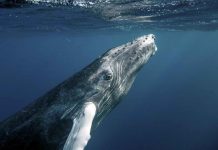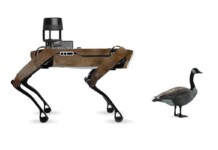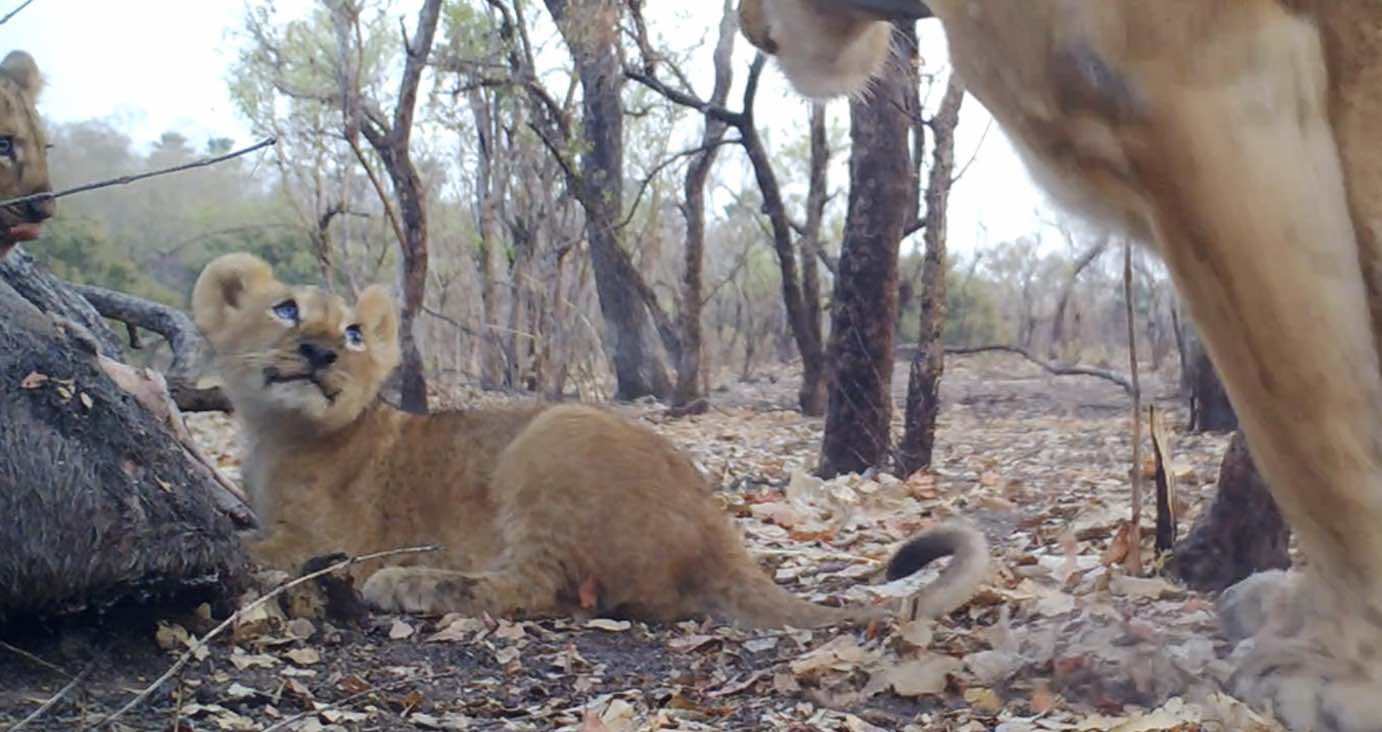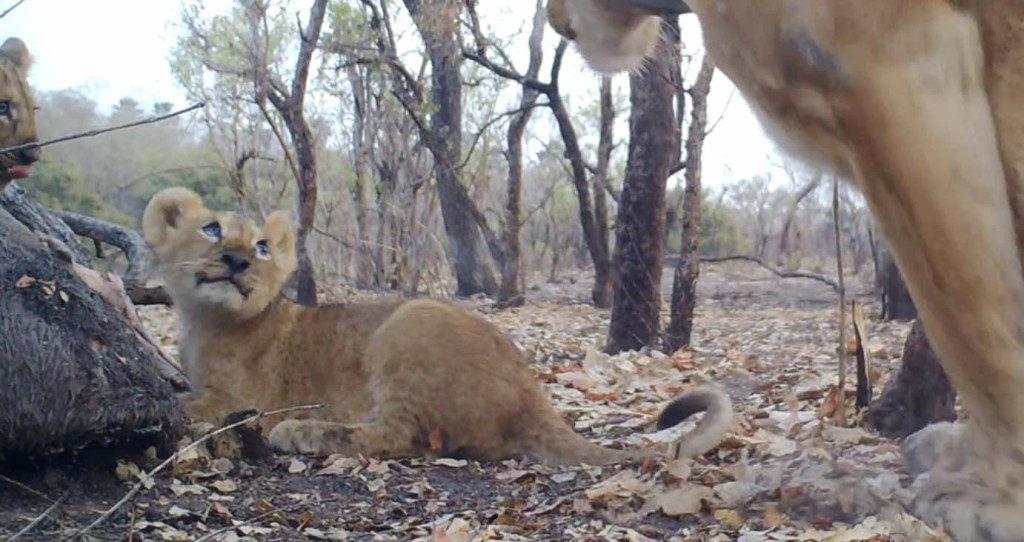
Reprinted with permission from World at Large, an independent news outlet covering conflict, travel, science, conservation, and health and fitness.
In a thrilling sign of recovery for the Critically-Endangered West African lion, camera trap footage and photos of a West African lioness and her three cubs playing, nursing, and feeding in Senegal’s Niokolo Koba National Park (NKNP) were released by the conservation outfit Panthera.
The high-definition videos and photos feature Florence, a 9 to 10-year-old GPS-collared lioness that scientists believe has now given birth to three litters, totaling nine cubs, since 2021.
Now considered the matriarch of Niokolo Koba, this lioness has contributed approximately one-third of the park’s lion population which has grown slowly from a razor’s edge pride of 10 to 15 individuals in 2011 to perhaps as many as 40 today.
Just 120-374 West African lions are estimated to remain in the wild today, with their historic range having shrunk by 99%. They are part of the Northern lion subspecies, which used to range across North Africa.
When WaL reported on NKNP’s lions last year, Panthera West and Central Africa Regional Director Dr. Philipp Henschel said that the lions had hunkered down in a tiny core area, about 10% of the park’s massive 9,000 square kilometers.
Since then, the lions have become more adventurous, and have slowly been exiting that core.
“We covered the entire park in camera traps last year and that also provided evidence of lions in areas where we didn’t know resident lions existed,” Dr. Henschel told WaL on Wednesday. “And so overall if we add that up we’re at about over a third, so about 35% or so of the park occupied by lions and it might be more, it’s not always a given that you’ll detect them”.
Lions being pride animals, some of this territorial expansion seems to be the early stages in the creation of new prides, since the camera trap arrays have picked up a coalition of pride-less males roaming around the park, all of whom might be Florence’s offspring.
“These animals we detect ranging quite widely out of this core area, and now we’ve also picked up a number of females leaving this core area,” says Dr. Henschel. “As these lions fill in the landscape the females breed and this leads to the establishment of new prides in new areas that we’re currently documenting”.
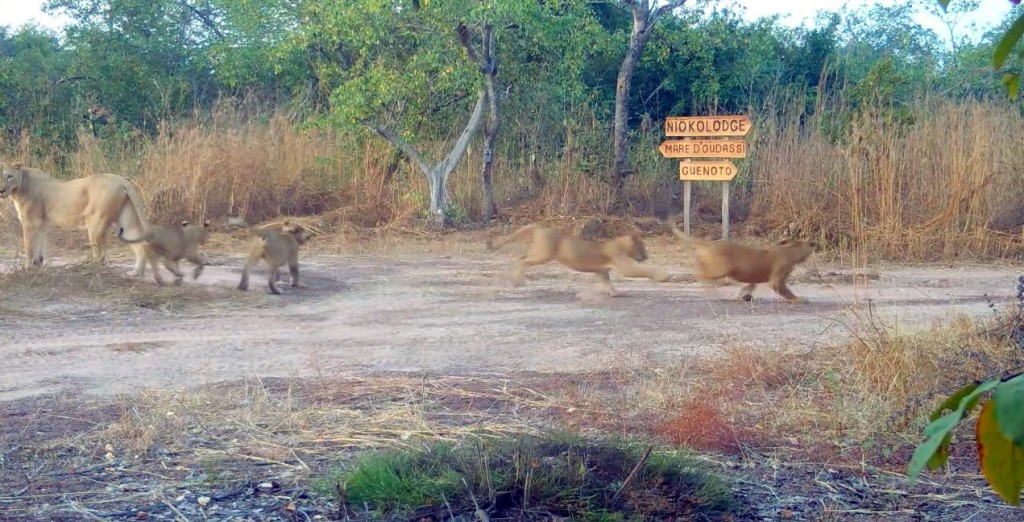
Against all odds
Henschel and his colleagues from Panthera arrived in Senegal’s largest national park, and the second-largest in West Africa, in 2011 when the situation was dire and uncertain.
Along with a “commendable” team of under-equipped rangers, they managed to collar Florence in the dead of night last year.
“They were never collared before so we know almost nothing about these cats,” Henschel told WaL a year ago in May.
GOOD SENEGAL NEWS: Why Senegal Winning Africa’s Biggest Sports Trophy is the Ultimate Feel-Good Story
“They were never seen. Back in the days in 2011 when we did the first survey there, I had a team of 4 people all part of the park’s staff, and of them, nobody had ever seen a lion. One of them, a driver, had already worked in the park for 10 years; he had never seen a lion”.
Now the work of restoring the lion populations is going about as well as anyone could have dared hope for. There’s much more interest from the government, which has been able to finance, train, and maintain 3 armed ranger squads that last year covered almost 9,000 kilometers of ground on their patrols, or about 35% of the park on foot.
There’s a commitment from the Park’s lead conservator who has given the green light to equip and hire 3 more ranger teams, which Henschel describes as “no small feat for the government,” which pays for real paramilitary training, and “a good salary”.
Perhaps the largest danger to the lions now is a population bottleneck, something that just comes with the territory when restoring a species from such a tiny number.
BIG CATS COMING BACK: Two Cheetah Cubs Born to Surrogate Mother in World’s First Successful IVF Operation to Save the Big Cats
However, even here there is good news.
“Even when I carried out the first ever lion surveys in 2011, I did intensive searches for lion scats, lion droppings, and we already have a snapshot from 2011 when the population was extremely low at 10-15 animals, and it still looked alright,” said Dr. Henschel.
“The geneticist reassured me that the genetic diversity was still quite high and that with a possible recent collapse of the lion population but [sic] that still has intrinsic diversity within it”.
“When the geneticists looked at the lion genetics, what they found was the Senegal population contains haplotypes that cannot be found in any other lion population in the world. So these are really unique to the Senegal population. Ideally, we would leave this genetic unit intact, but it depends on the results of our genetic analysis,” said Dr. Henschel.
MORE LION NEWS: Lions in India Get New Sanctuary as Numbers of Asiatic Lions Soar in Their Last Stronghold
The analysis is expected next year, but the central government and parks department are keen to take advantage of the lions for tourism revenue. The park is truly enormous; the same size as Yellowstone in the US, and contains other rare species like leopards, and the only remaining population of West African wild dogs.
“Compared to when we started the lions are so much more visible,” says Dr. Henschel. “There’s a new lodge in the park. I spoke to the lodge manager last month and they’re now fully booked for the game viewing season, and things are moving in that direction”.
SHARE This Unbelievable Recovery With Your Own Pride…



